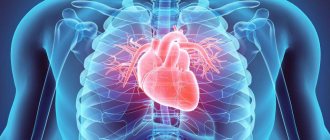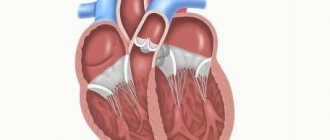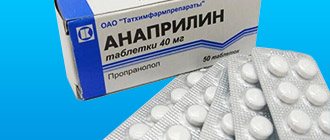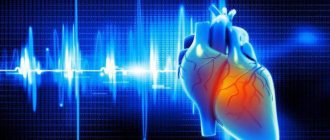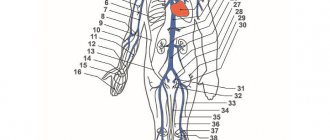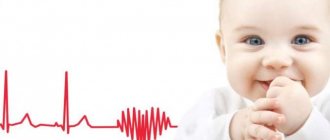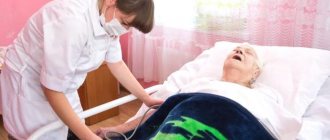Heart disease is considered the number one killer today. Often the minutes count, and death occurs if help is untimely. Therefore, the nursing process for acute cardiovascular failure (ACF) is an important step towards saving human lives, pre-hospital emergency professional assistance to a person during a heart attack.
Heart failure and the role of timely assistance
Today, cardiovascular failure is one of the causes leading to death. Not only older people are at risk, but also younger people who lead an unhealthy lifestyle and expose their bodies to high physical stress.
The danger of the disease lies in the fact that it does not always manifest itself with characteristic symptoms. Often the patient does not pay attention to the pronounced symptoms, blaming bad weather conditions, overwork, lack of sleep, and so on. And the disease progresses, bringing a possible attack closer. It may happen that at the time of the attack there will be no one nearby. Failure to provide emergency care for acute cardiovascular failure results in the death of a person.
Today, first aid is often practiced. This is a medical service provided by nurses, it provides the following actions:
- emergency intervention in case of a possible attack;
- calling an ambulance or a resuscitation team;
- providing first aid to a person in case of a possible attack;
- ensuring access of fresh air to the room where the victim is located;
- the patient must be placed in a sitting position;
- applying tourniquets to the limbs to reduce blood flow to the heart;
- direct cardiac massage;
- artificial respiration.
These are actions that can only be performed by a professional. Therefore, emergency care for acute heart failure is provided only by nurses who have undergone special training. Sufficient attention is paid to the nursing process in acute cardiovascular failure, because assistance should be provided at the moment when the first symptoms of an impending attack appear.
Nursing process in pathology: cardiovascular system
"MINISTRY OF SOCIAL DEVELOPMENT AND HEALTH" GBOU VPU IGMA
"Department of Propaedeutics of Internal Diseases"
ABSTRACT ON THE TOPIC:
"Nursing process in pathology: cardiovascular system"
Scientific supervisor
completed by student 205 lech
E. S. Ryabov
IZHEVSK 2012
- Introduction
- General symptoms of diseases of the cardiovascular system.
- Stage 1 – Nursing examination.
- Stage 2 – Nursing diagnosis
- Stage 3 – Planning assistance
- Stage 4 – Implementation of the care plan
- Emergency care for cardiovascular diseases
Introduction:
Cardiology (Greek kardia - heart, logos - study) is the branch of internal medicine that studies the etiology, pathogenesis and clinical manifestations of cardiovascular diseases (diseases of the circulatory system) and develops methods for their diagnosis, prevention and treatment.
With diseases of the circulatory system, patients present a variety of complaints.
The most commonly observed symptoms are chest pain, palpitations, shortness of breath, suffocation, swelling, the patient feeling of interruptions in the functioning of the heart, etc.
Monitoring and care of patients with cardiovascular diseases should be carried out in two directions.
• General activities – monitoring and care activities that patients with diseases of various organs and systems need: monitoring the general condition of the patient, thermometry, monitoring pulse and blood pressure, filling out a temperature sheet, providing
personal hygiene of the patient, supply of the vessel, etc.
• Special measures – monitoring and care measures aimed at helping patients with symptoms characteristic of cardiovascular diseases: pain in the heart and chest, symptoms of acute and chronic heart failure, edema, cardiac arrhythmias, etc.
General symptoms of diseases of the cardiovascular system.
Hypertensive crisis is an emergency condition caused by an excessive increase in blood pressure and manifested by a clinical picture of target organ damage, which requires an immediate decrease in blood pressure to prevent damage to third organs.
Clinic and diagnostics
During a hypertensive crisis, symptoms of impaired blood supply to organs and systems, most often the brain and heart, are observed:
- An increase in diastolic blood pressure above 110-120 mm Hg.
- Headache
- Dyspnea
- Chest pain
- Neurological disorders (vomiting, convulsions, impaired consciousness, paralysis)
A hypertensive crisis is dangerous for patients with pre-existing heart and brain diseases.
Hypertensive crisis type 1
1. Occurs in the early stages of hypertension, mainly in young people 2. Development is acute (within 1 - 2 hours), more often after stress, short-term course (3 - 4 hours) 3. Predominant increase in systolic blood pressure 4.
The main mechanism of the crisis: cardiac, tachycardia 5. Complaints of a sharp headache, nausea, vomiting, palpitations, trembling, chills, a feeling of fear, agitation with vegetative manifestations: red spots on the body, a feeling of heat, increased sweating 6.
Complications - rare
Hypertensive crisis type 2
1. Occurs in the late stages of hypertension in elderly people, patients with “experience” 2. Development is gradual, the course lasts up to several (4 - 5) days 3. Predominant increase in diastolic blood pressure 4.
The main mechanism of the crisis is an increase in vascular tone with the development of edema syndrome, bradycardia
5.
Complaints of headache, nausea, vomiting, stupor, lethargy, dizziness, staggering when walking, impaired hearing, vision, sensitivity, muscle strength
6. Complications - often
Heart failure
Dyspnea in cardiovascular diseases is one of the signs of heart failure,
which is caused by a progressive decrease in myocardial contractile function.
Suffocation. Choking (cardiac asthma) in heart failure is a sudden severe attack of shortness of breath, accompanied by noisy breathing, most often developing at night (due to increased tone of the vagus nerve, which causes narrowing of the coronary vessels).
Pulmonary edema is the most severe manifestation of heart failure, which
where the liquid part of the blood sweats through the walls of blood vessels and accumulates in the alveoli.
Edema in heart failure is the result of stagnation of blood in a large circle of blood circulation.
growth and fluid retention in the body.
Fainting
Fainting (Greek syncope; syncope) is a short-term loss of consciousness,
caused by acute insufficiency of blood supply to the brain.
Collapse
Collapse (lat. collapsus) is a clinical manifestation of acute vascular insufficiency with
a drop in vascular tone, a decrease in the contractile function of the heart, a decrease in blood volume and a drop in blood pressure.
Stage 1 – Nursing examination.
Pain in the heart area and behind the breastbone is the most common complaint. When taking a medical history, it is necessary to find out the specific location, characteristics and duration of pain.
Pain as a symptom of one of the heart diseases:
Coronarogenic heart lesions. – Myocardial ischemia (angina pectoris). A feeling of pressure behind the sternum with typical radiation to the left arm; usually during physical stress, often after eating or due to emotional stress. The effect of nitroglycerin and rest is diagnostically significant. – Acute myocardial infarction.
The sensations are close to those described for myocardial ischemia, but are more intense and last longer (approximately 30 minutes); rest or nitroglycerin does not relieve them. III and IV heart sounds often occur. Non-coronary heart lesions. Myocarditis. Pain in the heart area occurs in 75-90% of patients with myocarditis. As a rule, this is a pressing, aching or stabbing pain, most often in the heart area.
There is no connection with physical activity; sometimes there is an increase in pain in the days following the exercise. Nitrates do not relieve pain. There is no clear connection between ECG changes and pain. Pericarditis. Pain in the heart area with pericarditis is one of the leading signs of the disease, but the pain syndrome has certain characteristics.
Most often, pain with pericarditis occurs only at the beginning of the disease, when friction of the pericardial layers occurs. When a significant amount of fluid appears in the pericardial cavity or fusion of the cavity, the pain disappears, and therefore the pain syndrome is short-lived.
In acute dry pericarditis, pain is most often localized in the area of the apical impulse, but can spread to the entire precordial region. Less commonly, pain is observed in the epigastrium or hypochondrium. Irradiation of pain to the left arm, shoulder, and scapula is not very typical for pericarditis. At the same time, irradiation to the right half of the chest and right shoulder is not uncommon.
The nature of the pain can be dull, aching or, conversely, sharp, cutting. A characteristic feature of pain with pericarditis is its dependence on breathing and body position. Breathing is often shallow due to increased pain with deep breathing. Sometimes patients are forced to take a forced position (sitting, leaning forward). Cardiomyopathy.
Pain syndrome occurs in all patients with cardiomyopathy, but it is most typical in hypertrophic cardiomyopathy.
The nature of pain in cardiomyopathy undergoes certain changes as the disease progresses. Most often, atypical pain initially occurs (not associated with physical activity, long-lasting, not relieved by taking nitroglycerin).
The nature and location of this pain can vary quite widely. Typical attacks of angina pectoris, as a rule, are not observed. More often, episodic painful attacks occur, provoked by exercise (usually walking), while the main background or most typical is spontaneous pain, to one degree or another relieved by nitroglycerin, but not as clearly as with typical angina.
Stage 2 – Nursing diagnosis
Priority issues:
- Impaired state of consciousness and motor activity
- Self-care deficit
- Eating disorder
- Abnormal heart contractions (tachycardia, bradycardia)
Potential problems:
Heartache
Psychological problem: fear of death
Goals:
Short-term: reduce heart pain, the best time to complete the task is within a week.
Long-term: complete recovery
Stage 3 – Planning assistance
The main assistance for diseases of the cardiovascular system is the dispensing of medications as prescribed by a doctor and monitoring the patient’s condition
Stage 4 – Implementation of the care plan
Dependent interventions as prescribed by a doctor (medicines)
Independent interventions without the intervention of a doctor: change bed linens, dynamic studies (BP, Pulse, etc.)
Interdependent interventions: diagnostic procedures
Emergency care for cardiovascular diseases
For myocardial infarction:
When the patient shows signs of myocardial infarction: severe pain in the heart area, shortness of breath, a sharp drop in pressure, heart rhythm disturbances and increasing pallor.
Emergency care for myocardial infarction is as follows: urgently call a doctor. The patient should be placed in a horizontal position with his head raised (place a cushion under it).
It is necessary to give the patient a tablet of nitroglycerin or another drug of the nitrate group under the tongue.
If available, additionally give an aspirin tablet, an analgesic (analgin, baralgin or tempalgin), 60 drops of valocardine or corvalol.
If the patient has suffered a cardiac and respiratory arrest, it is necessary, independently or with an assistant, to begin resuscitation measures to restore breathing and cardiac activity.
For Angina:
Provide rest and give a nitroglycerin tablet under the tongue, access to fresh air, take an ECG and monitor the patient!
A patient with angina pectoris freezes (standing position), and with a myocardial infarction the patient is in an excited state.
Risk factors: atherosclerosis, smoking, stress, diabetes, obesity, hypertension, age!
A hypertensive crisis requires urgent medical intervention and the administration of antihypertensive drugs, as it can be complicated by impaired cerebral and coronary circulation. Before the doctor arrives, the patient must be provided with complete rest, access to fresh air, you can take hot foot baths and warm hand baths (with a water temperature of 37-40 ° C).
A patient with acute arterial hypotension must be
live, raise the foot end of the bed to improve blood flow to the brain, administer medications as prescribed by the doctor.
Bibliography :
1 https://kbmk.info
2 https://ru.wikipedia.org
3 Oslopov, Bogoyavlenskaya “General nursing”
4 www.medkampus.ru
Source: https://www.yaneuch.ru/cat_46/sestrinskij-process-pri-patologii-serdechno/82353.1507453.page1.html
Causes of heart failure
As sad as it is to say, today this disease threatens not only people of retirement age. Even children suffer, and there is a very reasonable explanation for this. Acute cardiovascular failure is due to many reasons:
- cardiac arrhythmias;
- tachycardia;
- ventricular fibrillation;
- drug overdose;
- alcohol intoxication, alcohol abuse;
- smoking;
- drug use;
- hereditary or congenital factors;
- hard physical labor.
As the disease develops, the heart is unable to provide normal blood circulation. A weakened “engine” is unable to push out a sufficient amount of oxygenated blood. Because of this, the organs and systems of the body suffer. The following signs appear:
- dyspnea;
- swelling of the face and limbs;
- cyanosis of fingers and toes;
- rapid or weakened heartbeat;
- loss of consciousness;
- lack of coordination;
- choking, often occurring at night;
- dry cough;
- increased sweating.
Many signs can clearly appear before the onset of an attack. A person experiences a feeling of fear, assuming that death has come for him. The face is covered with sweat, a bluish triangle is clearly visible above the upper lip. Coordination of movements is often impaired. At this moment, he must realize that there is a person nearby who can provide professional assistance before the ambulance team arrives. This is the nursing process.
Nursing care: basic principles of care
The nurse is appointed by the patient's attending physician. She is given specific tasks. Help should be provided urgently as soon as signs of deterioration in well-being are noticeable. The set of measures carried out by the sister provides for very specific tasks in order to:
- reduce the load on the heart;
- protect blood vessels by reducing pressure in them;
- reduce membrane permeability;
- increase myocardial contractility;
- improve metabolism in the myocardium.
Often nursing care is limited to confidential conversation. This is important to help a person eliminate the feeling of fear, ease his reaction to the attack and his own condition. After a conversation and assessment of the patient’s condition, a schedule of care and assistance for the patient is determined. Care can be short-term or permanent (long-term).
Short-term care is the provision of support over a period of several weeks, when the nurse is constantly with the patient. Long-term care involves not only providing assistance itself, but also teaching the patient special methods, using which he can independently normalize his condition before the arrival of an ambulance or the arrival of a doctor, if this happens in a clinic.
For each nursing process, an action plan must be drawn up, agreed upon with the patient himself or with his loved ones. The consent of relatives must be obtained for this.
The nursing process consists of several actions repeated by loved ones or the patient himself in the absence of a nurse, namely:
- measurement of basic indicators (pulse, pressure, temperature);
- give injections, put on an IV;
- collect samples for laboratory testing.
This is independent nursing care. But there is also dependent care, when all the actions of the nurse are controlled by the attending physician. For example, this may happen during an operation when a nurse is assisting.
Important! During the period of providing nursing care, the nurse must psychologically prepare the patient for a favorable outcome of the disease.
Analyzing everything that has been said, you can understand how important professional nursing care is for the patient. This significantly alleviates the patient’s condition, removes negative thinking and fear of death, and helps the patient adapt to society, taking into account his condition. Practice shows that proper care for patients with heart failure significantly reduces the risk of sudden death.
Caring for patients with hypertension
Hypertension is a disease in which the main clinical symptom is increased blood pressure.
According to the recommendations of the World Health Organization, high blood pressure is considered to be, regardless of age, pressure above 139/89 mmHg. Art.
In its development, the disease goes through 3 stages. All three stages are characterized by complaints of headache, poor sleep, increased irritability, decreased memory and performance.
A dangerous complication of hypertension is the development of a hypertensive crisis, which is characterized by: severe headache, dizziness, nausea, vomiting, and visual disturbances. Hypertensive crisis is a serious condition, dangerous in its consequences and requiring immediate medical attention.
Treatment and care of patients with arterial hypertension can be difficult due to some misconceptions of patients suffering from this disease. Patients think that:
- Hypertension can be cured.
- Once blood pressure has returned to normal, treatment can be stopped.
- If there are no symptoms, then there is no disease.
- Any change in well-being is caused by a change in blood pressure, so you need to either take an extra pill or, conversely, skip a dose.
- If you follow a diet and exercise, you do not need to take medications.
- Blood pressure can be determined by how you feel.
Rules for caring for patients with hypertension
Optimal working and rest conditions
- Prevention of stressful situations.
- Creating conditions for physical and mental peace.
- Creating conditions for good sleep.
- Prohibition of night work
- Prohibition of work associated with strong emotional stress and attentional stress.
- Moderate, regular exercise is helpful for lowering blood pressure. Short-term isotonic exercises, such as walking, are indicated. Isometric loads are not shown, since during their implementation blood pressure increases.
Organization of proper nutrition
- Losing excess weight.
- Limit the consumption of fried and fatty foods.
- Limiting the caloric content of food (should not exceed the daily standard requirement).
- Limit the consumption of table salt to 6 g/day.
- A dairy-vegetable diet enriched with magnesium salts helps lower blood pressure. Foods high in calcium, low in fat and caffeine are beneficial. It is necessary to exclude products containing licorice root.
Monitoring the general condition of the patient
- Determination of the patient's well-being.
- Measuring blood pressure as often as recommended by your doctor, but at least once a day;
- Measuring the amount of fluid drunk and excreted.
Monitoring compliance with drug treatment requirements
- Monitoring the constant, timely and full use of medications prescribed by a doctor.
- Prevention of orthostatic collapse while taking drugs that lower blood pressure: carefully change the patient’s body position from lying or sitting.
Goals provided by the nursing process
The nursing process provides patient care, service, and patient recovery. These few words can define the goals pursued by this service. The nurse must provide conditions for solving certain problems, these are:
- determining the patient's need for additional medical care;
- creation of a clinical information base about the patient’s condition;
- creating a care plan;
- determining the effectiveness of measures taken;
- reviewing the action plan if they are not effective;
- stages of the nursing process.
Nursing care is provided in five areas:
- Objective and subjective examination. These are two methods that allow the nurse to give the most accurate picture of the patient's condition over a certain period of time.
- Visual examination and drawing up a clinical picture of the patient’s condition based on laboratory examinations. At this stage, the direction of subsequent care is determined, problems that the patient may encounter in the family circle are analyzed.
- Nursing care planning. Goals are determined and ways and methods of achieving them are assigned based on the patient’s condition.
- Intervention. At this stage, all planned actions are carried out to achieve goals to improve the patient's condition. Analysis and evaluation of the work performed.
- At the last stage, it is determined how effectively all actions were developed and implemented. Here the nurse analyzes and compares the achieved goals with the expected ones.
Upon completion of all stages, appropriate entries are made in the nursing medical history.
Nursing process for diseases of the cardiovascular system
2. 2.1. TOPIC: NURSING EXAMINATION OF PATIENTS WITH CARDIOVASCULAR SYSTEM DISEASES
Currently, both in Russia and in most other industrialized countries, cardiovascular diseases occupy the first place among the causes of death.
Of great importance in terms of primary and secondary prevention of diseases of the cardiovascular system is the interest and active participation of the entire population in it.
Thus, a nationwide anti-smoking program in the United States has produced concrete results: mortality from cardiovascular diseases has begun to decline, while in Russia, where smoking has become a national problem, mortality is steadily increasing.
Nursing personnel, as the largest group of medical workers (1.4 million people), are able to make a real contribution to the dissemination of knowledge among the population on maintaining a healthy lifestyle that allows them to avoid the development or progression of diseases of the cardiovascular system.
However, individual work with the patient is of particular importance in the prevention of diseases, because only recommendations that take into account the specific characteristics of a person’s personality and physical status, genetic predisposition and the conditions in which he lives and develops can achieve the maximum effect. Therefore, in the work of a qualified nurse, the nursing process is used as a structure that allows one to determine the individual characteristics of the patient, plan a targeted intervention and implement it.
Stage 1 of the nursing process - collecting information about the patient
When examining a patient, it is necessary to clarify his complaints.
Typical complaints for a cardiac patient are the following: pain in the heart, shortness of breath, asthma attacks, swelling, palpitations, increased or decreased blood pressure and associated complaints of headache, dizziness, tinnitus, flashing spots before the eyes, nausea, vomiting , nosebleeds, increased irritability, insomnia, fainting, etc. Having identified their presence, it is necessary to clarify their nature.
PAIN: localization, irradiation, nature, intensity, duration, what is associated with it, how it is relieved.
Shortness of breath: constant or periodic, connection with physical activity, time of occurrence, whether there are attacks of suffocation.
HEARTBEAT: nature, what it is associated with, constant or periodic, what complaints it is accompanied by.
NAUSEA, VOMITING: connection with food intake, nature and amount of vomit, whether relief occurs after vomiting.
When questioning the patient, special attention should be paid to answering the following questions:
-When did you first feel pain in your heart?
-What is the nature of the pain: stabbing, squeezing, aching? Constant or paroxysmal? How long does the pain attack last? How do you relieve pain yourself? What causes pain (walking, stress, physical activity, inhaling cold air)? What is the intensity of the load at which pain occurs?
-Do you use nitroglycerin, validol? What is the effect of taking them?
- Do you feel out of breath when walking, at rest, or when doing physical activity?
What is the intensity of exercise at which shortness of breath occurs?
-how much liquid do you drink per day (approximately)?
-How much urine do you excrete per day?
-Have you recently noticed a rapidly progressing increase in body weight, an enlarged abdomen, are your shoes too tight in the evening, is there any visible swelling?
-Are headaches bothering you? What provokes their appearance (stress, physical or mental stress)?
-Do you control your blood pressure? Who measures your blood pressure: yourself, medical workers, family members?
-how often do you seek medical help for your condition?
-What conditions do you work under? (night shifts, noise, vibration, neuropsychic stress, physical activity, hypothermia, etc.)
When questioning the patient, it is necessary to pay special attention to the presence of risk factors that contribute to the development and progression of cardiovascular disease: smoking, alcohol abuse, physical inactivity, frequent stressful situations, excess nutrition, excess body weight, increased blood pressure, age, unfavorable heredity, male gender.
When conducting an objective examination of the patient, special attention should be paid to the following signs:
– skin color (pallor, cyanosis, hyperemia)
– skin moisture (wet, cold sweat)
– shortness of breath (at rest, with movement, respiratory rate per minute)
– peripheral edema (localization, severity)
– abdominal enlargement (ascites)
– pulse characteristics
– BP on both arms
– presence of wheezing in the lungs upon auscultation
– muffled heart sounds, arrhythmia, heart murmurs.
Stage 2 of the nursing process: nursing diagnosis
After analyzing the results of the nursing examination, the problems of the patient and his family should be identified.
The nurse's main attention should be focused on problems associated with the violation of vital needs and causing the patient a state of physical and mental discomfort. Nursing diagnoses include not only the physical symptoms of the disease that bother the patient (pain, shortness of breath, increased blood pressure, etc.), but also the patient’s impaired adaptation to these symptoms.
For example: pain in the heart.
The solution to this problem is the dependent activity of the nurse, since before providing assistance, it is necessary to know the medical diagnosis and the medications necessary for administration. The function of the nurse in this case will be to carry out medical prescriptions, create comfortable conditions for the patient and monitor his condition.
No less important is the patient’s problem “the patient’s lack of knowledge about methods of preventing painful attacks and self-relief of pain.”
In this case, there is a violation of the need of level 5 of Maslow’s pyramid - the need for knowledge about one’s health, which can be regarded as impaired adaptation to the disease.
This psychological problem of the patient can be successfully solved by a qualified nurse.
It is necessary to identify exactly those nursing problems in the patient, the solution of which is not beyond the professional competence of the nurse and is possible with qualified nursing intervention. When working with a patient and his family, the nurse must clearly understand which level of need violation is more significant for them.
For example: the problem of “shortness of breath at rest” in a bed patient is a violation of the need to breathe (level 1 of Maslow’s pyramid), its solution requires care, while in the presence of shortness of breath during physical activity, the problem of “lack of knowledge about methods of prevention or reduction” is more significant. shortness of breath when performing physical activity." This is a Level 5 need disturbance that the nurse addresses through patient education.
Stage of the nursing process - planning
The most important thing when planning care is to define achievable goals aimed at the patient or his family, with a mandatory indication of the time period during which this goal must be achieved.
When planning an intervention for a specific problem, it is necessary to distinguish between short-term and long-term goals.
As a rule, the short-term goal is to provide the patient with physical comfort, and the long-term goal is to solve psychological problems, including eliminating the knowledge deficit.
For example: nursing diagnosis “severe shortness of breath at rest due to heart failure.”
Short-term goal: “Dyspnea will be less distressing for the patient.”
Activities to achieve this goal:
- position in bed with an elevated headboard,
- ventilation every 2 hours,
– inhalation of humidified oxygen when shortness of breath increases,
- split meals with the exclusion of foods that cause flatulence.
Long-term goal: “The patient's family will demonstrate knowledge of interventions that reduce the patient's dyspnea in 7 days.”
Activities to achieve this goal include talking with relatives and demonstrating care techniques.
The nurse can use professional standards to guide the implementation plan. However, their use should not be thoughtless. In each specific case, it is necessary to use an individual approach to the patient. Each planned action of the nurse must have a motivation, that is, an explanation for what purpose it should be carried out.
Previous14151617181920212223242526272829Next
Date added: 2015-11-06; ; ORDER A WORK WRITING
SEE MORE:
Source: https://helpiks.org/5-99071.html
Chronic heart failure and nursing intervention
The responsibilities of a nurse are not limited to the fact that she carries out purely professional actions.
One of the tasks is for the patient to follow the diet recommended by the doctor. This usually happens if the disease is diagnosed in the first and second stages.
The patient experiences severe shortness of breath, swelling of the extremities, palpitations, and fatigue. These are signs that a large amount of fluid is accumulating in the body. Here it is necessary not only to provide care and drug therapy, it is equally important to monitor compliance with the diet prescribed by the attending physician:
- Protein food is present. This mainly includes boiled meat, fermented milk products, and eggs.
- Limit or eliminate salt intake completely.
- Reduce fluid intake. Taking into account soups and drinks, its intake into the body should not exceed 1 liter per day.
- Food intake is carried out in small portions 5-6 times a day. It is recommended to offer the patient herbal infusions and products that have a diuretic effect. Products that promote fluid removal include:
- milk;
- seafood;
- potato;
- dried apricots;
- raisin;
- figs;
- cabbage;
- parsley;
- peaches;
- currants;
- grape;
- bananas;
- apricots.
These same foods are rich in potassium, which has a beneficial effect on the myocardium. Therefore, a nurse must not only be a professional in her immediate profession, but also have the skills and knowledge of a psychologist and nutritionist.
Drug therapy
The nurse controls the intake and dosage of prescribed medications. The effectiveness of most medications directly depends on the food consumed by the patient. This is why so much attention is paid to dietary nutrition.
The nurse strictly controls the timing of meals and medications. This not only provides a positive therapeutic effect, but can help reduce the dosage of certain medications. The nurse checks all medications as prescribed by the attending physician. She sorts, arranges, helps to take a certain drug on time, following certain rules:
- Before each dose, the packaging and name are checked, and the drug is given to the patient in accordance with the prescription. The patient must take the medicine in the presence of a nurse.
- Drugs that are intended to be taken before eating are given to the patient 15 minutes before. After eating - the same, after 15 minutes. Those medications that must be taken on an empty stomach are given to the patient no more than an hour, but no less than 20 minutes before breakfast.
- Sleeping pills are given 30 minutes before bedtime.
- Validol and nitroglycerin are constantly near the patient. Placed under the tongue as needed or as prescribed by the attending physician.
- Infusions containing alcohol must be monitored with special care, as this can cause a surge in blood pressure.
The nurse accompanies each dose of the drug with an explanation to the patient or his relatives: what exactly she is giving, what the principle of action of this drug is. It is also necessary to explain possible side effects. The patient is explained that there is no need to be afraid of the consequences, since she is nearby, so help will be provided in a timely manner. Side effects are practically impossible, since the prescription was made by a doctor.
The nurse needs to:
- Clearly know what vascular insufficiency is, causes, symptoms, methods of providing first aid.
- Regularly measure blood pressure, keep records of indicators and teach this to loved ones. It must be emphasized that the pressure is measured in a calm environment: the patient should not be irritated by anything. The most accurate readings are obtained two hours after eating.
- Check the condition of the skin and the presence of bedsores in bedridden patients. If necessary, treat wounds with special talc or solutions.
- Monitor water balance and swelling.
In a word, the nurse strictly observes and carries out all the instructions made by the attending physician. Actions are recorded in detail in the nursing history. The attending physician is regularly informed about the patient's condition.
Caring for a patient with angina pectoris
Angina pectoris is one of the manifestations of coronary heart disease. It occurs in cases when an insufficient amount of blood flows to the myocardium (heart muscle) as a result of various reasons: spasm of the coronary vessels that feed the heart muscle, narrowing of their lumen as a result of atherosclerosis and a number of other reasons.
The main symptom of angina is squeezing pain in the heart area (pain behind the sternum). More often occur during physical activity. They disappear quickly after taking nitroglycerin and stopping the physical activity that led to their occurrence.
Rules for caring for patients with angina pectoris
Care during an attack
- Care should be carried out calmly and unhurriedly.
- During an attack, it is necessary to provide the patient with complete rest. Ask the patient not to move unless necessary. Take out of the room everyone who is particularly worried and very worried, talking excitedly and constantly giving a lot of recommendations.
- The patient must be put to bed.
- Recommend that the patient relax, breathe calmly, evenly and deeply.
- Provide a flow of fresh (but not cold!) air into the room where the patient is lying.
- Give the patient 1 tablet of nitroglycerin under the tongue or 1-3 drops of an alcohol solution on a piece of sugar.
- It is recommended to carry out distracting procedures (mustard plasters on the heart area, immersing the left hand up to the elbow in hot water).
- If the pain does not go away after repeated administration of nitroglycerin, it is necessary to call an ambulance and arrange for an electrocardiogram to be taken.
Preventive actions
- Limit the consumption of fried and fatty foods.
- Prevention of stressful situations.
- Creating conditions for physical and mental peace.
- Creating conditions for good sleep.
- Prohibition of night work.
- Prohibition of work associated with strong emotional stress and attentional stress.
- Monitoring the constant and timely intake of medications prescribed by a doctor.
- Training in the correct use of nitroglycerin during an attack of the disease: the tablet is placed under the tongue and remains there until completely dissolved. The tablet must not be sucked, chewed or swallowed!
Nursing Success
The nurse must remain near the patient at all times. The patient’s recovery time depends on her professionalism and experience. A trusting relationship must be established between two people.
A nurse, if she notices that her presence irritates the patient, should inform the attending physician about this or try to find out from the patient what exactly he does not like.
The work of a nurse is not limited only to monitoring the condition and taking medications. The actions include a much wider range of services. For example, a nurse might:
- conduct a conversation about the dangers of smoking and persuade the patient to quit smoking;
- talk about how harmful it is to be nervous with such a disease and what the consequences may be;
- invite you for a walk and spend this time together;
- if necessary, recommend a consultation with a psychologist and arrange a meeting with this specialist;
- recommend books and music that have a beneficial effect on the psyche;
- provide information about cardiac failure and methods of its prevention;
- recommend specialized courses.
Nursing care is a relatively new type of service provided today to patients with chronic heart failure. This practice produces positive results on the long road to recovery. Relatives do not always have enough time to pay proper attention to the patient. A qualified nurse is called upon to fill this niche.
